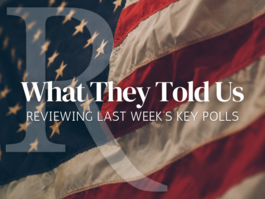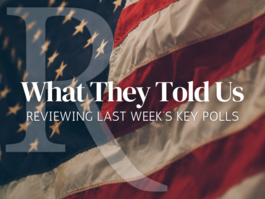For July 4th: Remembering Why the Right Doesn't Own the Stars and Stripes
A Commentary by Joe Conason
Like many men who volunteered for the U.S. Army in World War II, my late father never boasted about his years in uniform. A patriot to his core, he nevertheless despised what he called the "jelly-bellied flag flappers." But in the decade or so before he passed away, he began to sport a small, eagle-shaped pin on his lapel, known as a "ruptured duck." Displaying the mark of his military service said that this lifelong liberal loved his country as much as any conservative -- and had proved it.
Are such gestures still necessary today? For decades, right-wingers have sought to establish a near-monopoly on patriotic expression, all too often with the dumb collusion of some of its adversaries on the left. But on July 4, when we celebrate the nation's revolutionary founding, I always find myself pondering just how fraudulent and full of irony this right-wing tactic is. It is only our collective ignorance of our own history that permits conservatives to assert their exclusive franchise on the flag, the Declaration of Independence and the whole panoply of national symbols, without provoking brutal mockery.
But we need not play their style of politics to argue that the left is equally entitled to a share of America's heritage -- indeed, in the light of history, perhaps more entitled than its rivals. So let's begin, in honor of the holiday, at the official beginning.
Although "right" and "left" didn't define political combat at that time on these shores, there isn't much doubt that behind the American Revolution, and in particular the Declaration of Independence, was not only a colonial elite but a cabal of left-wing radicals, as well.
What other description would have fitted such figures as Samuel Adams and Thomas Paine, who declared their contempt for monarchy and aristocracy? Their wealthier, more cautious, colleagues in the
Continental Congress regarded Adams as a reckless adventurer "of bankrupt fortune," and Paine as a rabble-rousing scribbler. Popular democracy was itself a wildly radical doctrine in the colonial era, tamed in the writing of the Constitution by the new nation's land-owning elites and slaveholders.
The right-wingers of the Revolutionary era were Tories -- colonists who remained loyal to the British crown, fearful of change and, in their assistance to the occupying army of George III, the precise opposite of patriots. Only from the perspective of two centuries of ideological shift can the republican faith of the Founding Fathers be described as "conservative."
The Civil War, too, was a struggle between left and right, between patriots and ... well, in those days, the Confederate leaders were deemed traitors (an epithet now usually avoided out of a decent concern for Southern sensibilities). Academics will argue forever about that war's underlying economic and social causes, but it was the contemporary left that sought to abolish slavery and preserve the Union, while the right fought to preserve slavery and dissolve the Union. Today, reverence for the Confederacy remains the emotional province of extremely right-wing Southern politicians and intellectuals (as well as the Ku Klux Klan and neo-Nazi skinheads, and not a few members of the tea party). These disreputable figures denigrate Lincoln, our greatest president, and wax nostalgic for the plantation culture.
At the risk of offending every furious diehard who still waves the Stars and Bars, it is fair to wonder what, exactly, is patriotic about that?
Yet another inglorious episode in the annals of conservatism preceded the global war against fascism. The so-called America First movement that opposed U.S. intervention against Hitler camouflaged itself with red, white and blue but proved to be a haven for foreign agents who were plotting against the United States. While Communists and some other radicals also initially opposed American entry into World War II for their own reasons, the broad-based left of the New Deal coalition understood the Axis threat very early. Most conservatives honorably joined the war effort after Pearl Harbor, but more than a few on the right continued to promote defeatism and appeasement even then. And with all due respect to neoconservatives and other late-arriving right-wingers, the historical roots of postwar conservatism -- the "Old Right" of Joe McCarthy and Pat Buchanan, the Buckleys and the Kochs -- can be traced to those prewar sympathizers of the Axis.
The criminal excesses of the Cold War in Vietnam and elsewhere, so eagerly indulged by the right to this day, alienated many Americans on the left from their country for a time. Conservatives seized the opportunity presented by flag-burning protests and other adolescent displays to marginalize their ideological opponents as un-American, although only a tiny minority dove off that deep end. But how many conservatives like Dick Cheney and Rush Limbaugh beat the Vietnam draft while liberals like John Kerry, Al Gore and Wesley Clark all served? And who truly protected this country's best interests back then -- the politicians who dispatched 50,000 young Americans to their deaths in the rice paddies or those who dissented?
It is a lesson we didn't learn in time to save us from another debacle in Iraq, when dissent was again vilified -- and again proved more sane and patriotic than the bloodlust of the chicken-hawks.
Yet somehow our wingers always manage to wrap themselves in Old Glory, as if it belongs to them alone. But on this holiday, and every day, it assuredly does not.
To find out more about Joe Conason, visit the Creators Syndicate website at www.creators.com.
COPYRIGHT 2013 CREATORS.COM
See Other Political Commentaries.
See Other Commentaries by Joe Conason.
Views expressed in this column are those of the author, not those of Rasmussen Reports. Comments about this content should be directed to the author or syndicate.
Rasmussen Reports is a media company specializing in the collection, publication and distribution of public opinion information.
We conduct public opinion polls on a variety of topics to inform our audience on events in the news and other topics of interest. To ensure editorial control and independence, we pay for the polls ourselves and generate revenue through the sale of subscriptions, sponsorships, and advertising. Nightly polling on politics, business and lifestyle topics provides the content to update the Rasmussen Reports web site many times each day. If it's in the news, it's in our polls. Additionally, the data drives a daily update newsletter and various media outlets across the country.
Some information, including the Rasmussen Reports daily Presidential Tracking Poll and commentaries are available for free to the general public. Subscriptions are available for $4.95 a month or 34.95 a year that provide subscribers with exclusive access to more than 20 stories per week on upcoming elections, consumer confidence, and issues that affect us all. For those who are really into the numbers, Platinum Members can review demographic crosstabs and a full history of our data.
To learn more about our methodology, click here.



